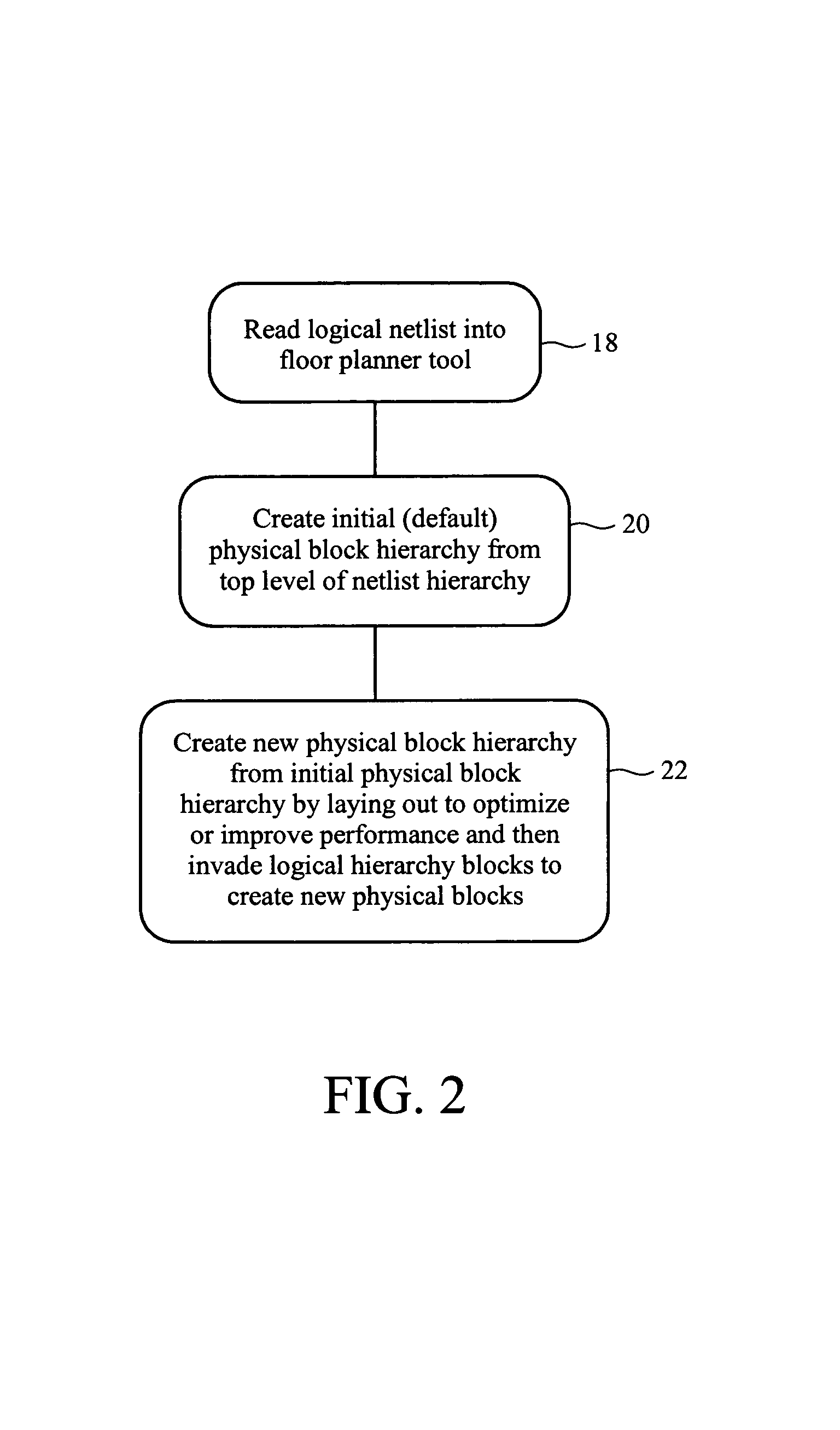Process for adjusting data structures of a floorplan upon changes occurring
a technology of floorplan and data structure, applied in the field of floorplan data structure adjustment upon changes occurring, can solve the problems of increasing complexity of integrated circuits in general, affecting the performance of workstations, and unable to so as to improve performance and meet timing and power consumption constraints.
- Summary
- Abstract
- Description
- Claims
- Application Information
AI Technical Summary
Benefits of technology
Problems solved by technology
Method used
Image
Examples
Embodiment Construction
[0078]Definitions
[0079]The teachings of the invention contemplate a general purpose computer coupled to a display, a keyboard and a pointing device and programmed with an operating system which executes as an application the floor planning software to be described below. The computer typically has a hard disk, and one or more ports for inputting and outputting data and may have a CD-ROM drive, floppy disk drive, DVD-RAM drive etc. to read in data stored on portable media.
[0080]To best understand the descriptions herein, consider the following terminology definitions.[0081]Instance—a piece or block of logic. It can be ‘flat’ (aka primitive), e.g., something simple and indivisible like an ‘AND’ or ‘NOT’. It can also be hierarchical—e.g., something that is defined by and includes at a lower level in a hierarchy, individual instance of simpler circuits such as a set of flat instances to form a more complex block of logic, such as an ALU or large RAM.[0082]Pin—represents an input or outp...
PUM
 Login to View More
Login to View More Abstract
Description
Claims
Application Information
 Login to View More
Login to View More - R&D
- Intellectual Property
- Life Sciences
- Materials
- Tech Scout
- Unparalleled Data Quality
- Higher Quality Content
- 60% Fewer Hallucinations
Browse by: Latest US Patents, China's latest patents, Technical Efficacy Thesaurus, Application Domain, Technology Topic, Popular Technical Reports.
© 2025 PatSnap. All rights reserved.Legal|Privacy policy|Modern Slavery Act Transparency Statement|Sitemap|About US| Contact US: help@patsnap.com



